If a Martian, completely unaware of Syracuse, asked me a good reason to visit it, I would give him
three excellent reasons for not being able to visit Syracuse: the Greek Theater, the Bears Museum and Ortigia . Easily accessible from the campsite thanks to the motorway that goes from Syracuse to Rosolini, Syracuse is well connected to Pachino also by bus.

Syracuse was officially founded in 734 BC as a colony of the Greek Corinth. In a relatively short time it became
among the most important and populous metropolises of Magna Graecia, rivaling only Athens . The original core of the city, concentrated in the island of
Ortigia , was almost completely destroyed by the earthquake that razed the entire Val di Noto in 1693. Its reconstruction in
Baroque style has made it another wonderful architectural core of which Sicily can boast. The
polis was formerly nicknamed
aretusea , because of Aretusa, the famous source of fresh water that for millennia quenches the Syracusans, among the few areas in Europe where the plant of the
papyrus .
Syracuse, rivaled with Athens also for the role of "capital" of the culture of the ancient world, having been an attractive center for the likes of
Plato , who tried to realize the political ideal of
> Re-Philosopher , and
Aeschylus , who in his magnificent theater presented the tragedy
I Persiani . In Syracuse was born the great mathematician and scientist ante litteram
Archimedes , whose "physical" intuitions played an important role in the resistance to Roman power. In Syracuse one of the first Christian communities was born and it is no coincidence that the city was also the birthplace of one of the most important and influential personalities of Christendom, the martyr
Saint Lucia .
Syracuse, as well as the entire Greek world, fell into Roman hands in 212 BC. then, with the collapse of the Western Roman Empire, follow a similar fate to the rest of Sicily, passing from the Byzantine domination to the Arab, Norman, Aragonese, Austrian, Bourbon and, finally, to the not spontaneous adhesion to the Kingdom of Italy of the Savoy. This abundance of cultural influences is reflected in the great architectural variety present in the city.

Rather common in Sicily were the buildings of Christian churches on pre-existing Greek temples. Thus the
Temple of Athena in Ortigia , dating back to the fifth century BC, already Christianized in the Middle Ages, was incorporated into the
Cathedral of the Nativity of Mary Most Holy , ie the
Cathedral of Syracuse . The Doric columns are indeed still visible and preserved. During the Arab domain, a mosque was built in the Cathedral. The current façade, in Baroque style, was built after the collapse of the previous Norman facade collapsed following the devastating earthquake of 1693. Ortigia is also home to the church of
Santa Lucia alla Badia , rebuilt entirely after the earthquake , which houses the
Burial of Saint Lucia of Caravaggio. There are also the ruins of two other temples, both dating back to the 6th century BC: the temple of Apollo (better preserved) and the temple of Artemis next to the
Palazzo Vermexio (dating back to 1629, current home of the Syracuse Town Hall). I conclude this rapid examination of Ortigia, absolutely not exhaustive, mentioning the only
Castello Maniace that was born as a military structure (built by Federico II on the fortification that probably built the Byzantine general Giorgio Maniace who tore Syracuse to Arab domination), throughout history has assumed different roles in relation to the domination of the turn, thus becoming another
symbol of the crucible of cultures that have contributed to fare Sicily .
 The area of Neapolis is an archaeological area
The area of Neapolis is an archaeological area where monuments of inestimable value stand such as the Greek Theater, the Roman Amphitheater and the Ara of Ierone.
From the vastness of the
Greek Theater one immediately realizes how important and populous Syracuse must have been in antiquity (estimates range from 250,000 to 1,000,000 inhabitants). Although the first building dates back to the fifth century BC, the current appearance is the fruit of the restructuring that in the third century BC. the tyrant Gerone II worked, then the tyrannical one in the imperial epoch and, unfortunately, of the
Spanish spoliation in the XVI century d.C. for the fortification of Ortigia. In the second half of the 16th century the ancient Greek aqueduct for agricultural purposes was reactivated: a
house of millers stands out on the top of the theater cavea. Only in the eighteenth century returned a cultural interest for the theater that gave way to a process of revaluation that led from the last century to its original reuse.
The
Roman Amphitheater , partly carved into the rock, was designed for gladiatorial shows and built during the Imperial age. Discreetly preserved it was brought to light in the middle of the 19th century.
Also the
Ara of Ierone II has been subjected to the work of Spanish spoliation, to which only the rocky base has survived. It was an
altar dedicated to Zeus.
From the
Neapolis you can easily move on foot to the
Regional Archaeological Museum Paolo Orsi , located in Villa Landolina (nineteenth-century mansion of the homonymous family) . Here is kept the history of Sicily, from prehistory to the Roman age. Here are preserved archaeological finds of any kind, coming from all over the island, from the skeletons of the now extinct
dwarf elephant , to the prehistoric objects of daily use, to the Hellenistic and Roman busts.
Finally, the historical value of the church of Santa Lucia al Sepolcro (12th century AD), of the church of San Giovanni (6th century AD) can be overlooked, from which the largest Christian catacombs can be reached after the Roman ones and the ruins of the ancient castle. Eurialo, in Belvedere, built in the fifth century BC from the tyrant Dionysius I, who saw the Byzantines as his last users.
Far from me any ambition of exhaustiveness towards one of the most important historical cities in Italy. With this article I aspire only to arouse, in those who have not already done so, a bit 'of curiosity in visiting Syracuse. If not for me, trust Cicero, who said
Urbem Syracusas maximam esse Graecarum, pulcherrimam omnium saepe audistis. Est, iudices, ita ut dicitur , translated:
You have often heard that Syracuse is the largest Greek city and the most beautiful of all. Gentlemen, it's just like they say .
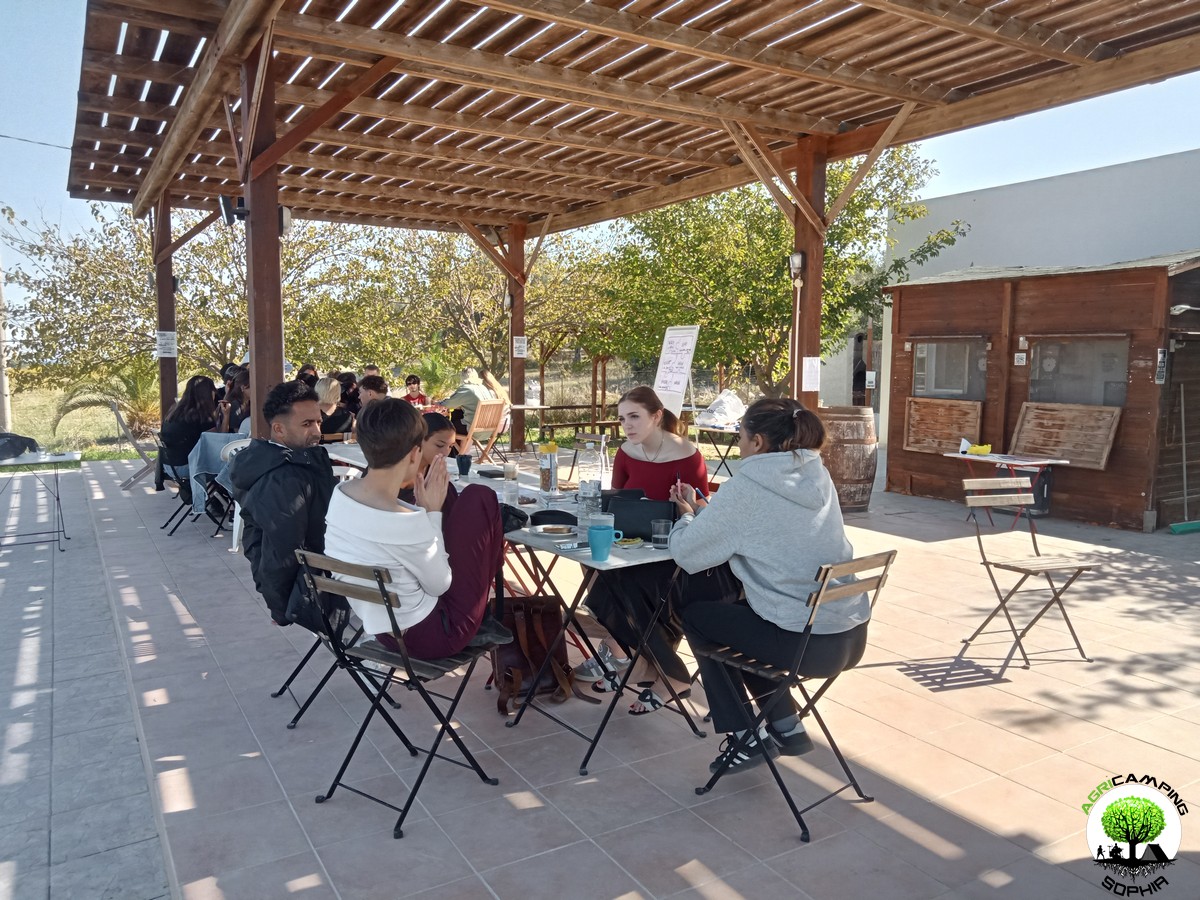 DO YOU WANT TO ORGANIZE AN ERASMUS AT AGRICAMPING SOPHIA?
DO YOU WANT TO ORGANIZE AN ERASMUS AT AGRICAMPING SOPHIA?
WHAT IS AGRICAMPING SOPHIA?
It is a campsite with tent pitches, glamping tents, mobile homes and bungalows
WHERE IS IT?
In Italy, in Sicily, near Syracuse, in Pachino: 36.736883, 15.095610
HOW TO CONTACT US?
info@agricampingsophia.it
(SPEAK ENGLISH) +39 3473079242 – (ONLY SPEAK ITALIAN) +39 3452396095
WHAT DO WE OFFER?
We offer hospitality and catering for Erasmus projects
FOR HOW MANY PEOPLE?
We can have 4-7 single beds in the Socrate Bungalow, 6-10 single beds in the Platone Mobile Homes, 4-6 single beds in the Aristotele Mobile Homes, 4 single beds in the Iblone Mobile Homes, 4 single beds in the single beds in the Empedocle Glamping Tents. In total we therefore have 18 comfortable single places or 31 single places with a fair spirit of adaptation.
IN WHICH PERIOD CAN AGRICAMPING SOPHIA BE AVAILABLE?
The most suitable periods to use our services...
 CART RUTS MODELED ON SOFT ROCK?
CART RUTS MODELED ON SOFT ROCK?
Read also RACK OR HOUSING FOR CLOGS?
Some cart ruts from the Targia district, in Syracuse, and most of the cart ruts from Granatari Vecchi, in Rosolini, give the impression of having been impressed, modelled, on a rock that was originally viscous, not entirely solid. As absurd as this hypothesis may seem, especially in Granatari Vecchi, the softness of the shapes and the at least anomalous uniformity of the rock bank, as if it were a concrete casting, which hosts the cart ruts, is unicum compared to the lithic context in the area.
In Targia this phenomenon is less impressive but if we consider the cart ruts essentially cart tracks, therefore furrowed roads indirectly resulting from the repeated passage of carts along the same route, we do not understand why such uniformity and smoothness is present, in the majority of cases, also on the parts not affected by the passage of the...
 RACK OR HOUSING FOR CLOGS?
RACK OR HOUSING FOR CLOGS?
Read also CART RUTS CUT FROM QUARRIES
In the presence of slopes, even slight ones, in some cart ruts in the Targia district, in Syracuse, central holes are found with a diameter of between 30 and 50 centimeters and a depth of 15-20 centimeters, spaced about 50 centimeters apart. Neither the position (they are not exactly in the center of the cart ruts and perfectly aligned with each other), nor the shape appear perfectly regular: either the passage of time and any wear have profoundly modified their original shape or, simply, they have never had a systematic regularity. However, the offset in position between one hole and another is never completely “off-axis”: there is always a portion about twenty centimeters wide that coincides with the same portion of the previous and subsequent hole. The best preserved and most defined holes are found in the cart ruts usually called Scala...
 CART RUTS CUT FROM QUARRIES
CART RUTS CUT FROM QUARRIES
Back to CART RUTS AND A FEW TOO MANY PROJECTIONS
I will skip any preamble, referring to what has already been written regarding the presence of cart ruts in south-eastern Sicily.
The easy academic tendency has been, in most cases concerning cart ruts, to consider them in terms of the latomie, or quarries, with which very often (for example in the cases of the Targia or Pizzuta districts) they share the same territory.
According to this theory, the carraie would have been indirectly created due to the wear of the rock at each passage of carts or sleds loaded with extracted stone blocks. I will not repeat the arguments presented so far in order to demonstrate that this is a theory that has little solid foundations on an in-depth analysis of the cart ruts. However, I will add a piece by demonstrating the implausibility of a connection between them in both chronological and functional...
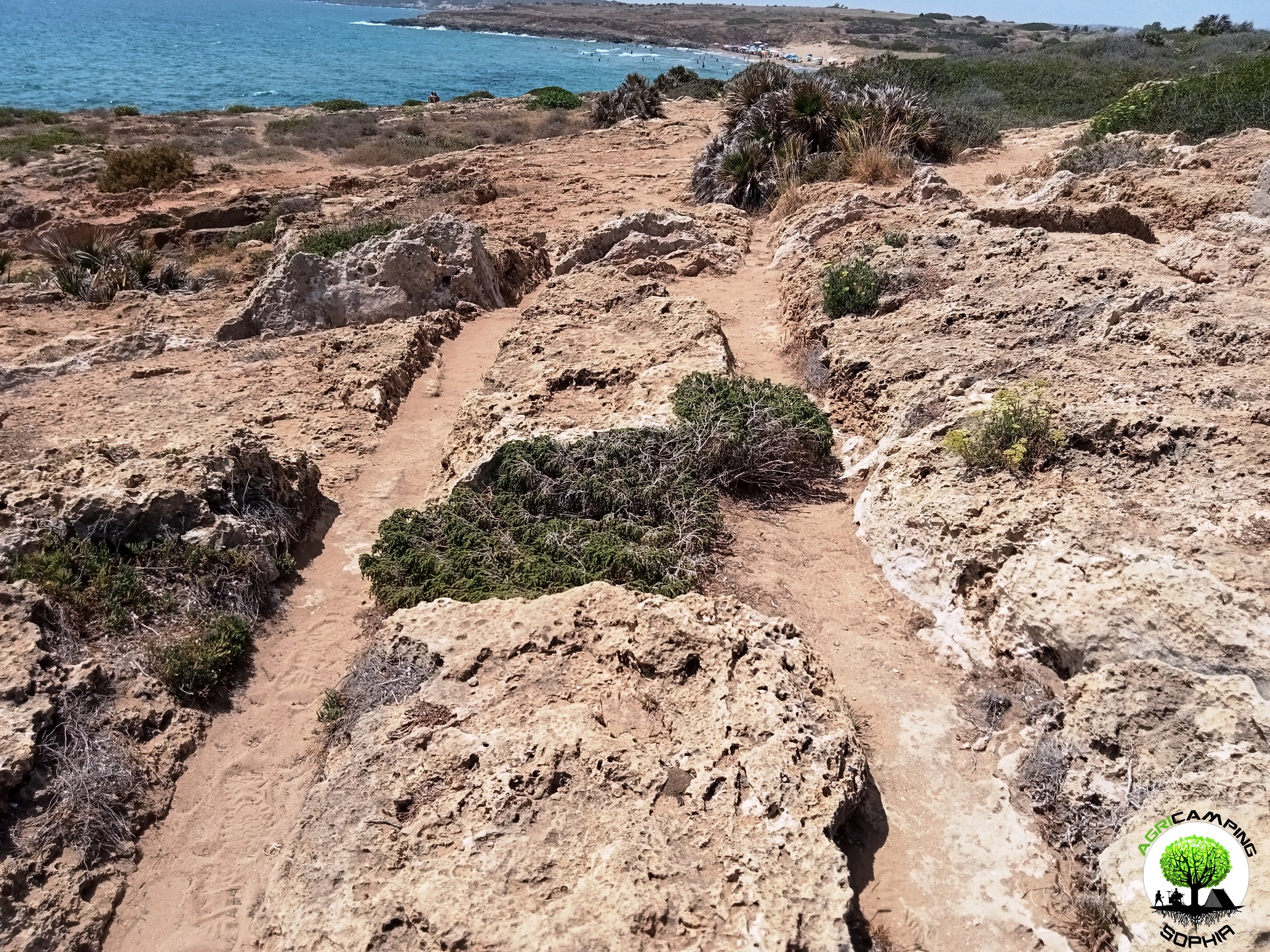 CART RUTS AND A FEW TOO MANY PROJECTIONS
CART RUTS AND A FEW TOO MANY PROJECTIONS
Read also THE POLISHING OF THE CART RUTS
I will skip any preamble, referring to to what has already been written regarding the presence of cart ruts in south-eastern Sicily.Considering the possibility that the cart ruts were gradually dug by the passage of carts pulled by pack animals, for example pairs of oxen, observing certain sections of the cart ruts present in the Granatari Vecchi district, in Rosolini, and in the Pizzuta district, close to the Vendicari Reserve, two questions arise:
1. Why force the animals to pass over rough surfaces and protrusions high, compared to the base of the furrows, even 60-70 centimeters?
2. Why, in the presence of such obstacles, not opt for a detour?
For Mottershead, Pearson and Schaefer such protrusions appeared later, since at the time of the passage of the wagons, a layer of earth covered the rocky bank, thus not making the obstacle...
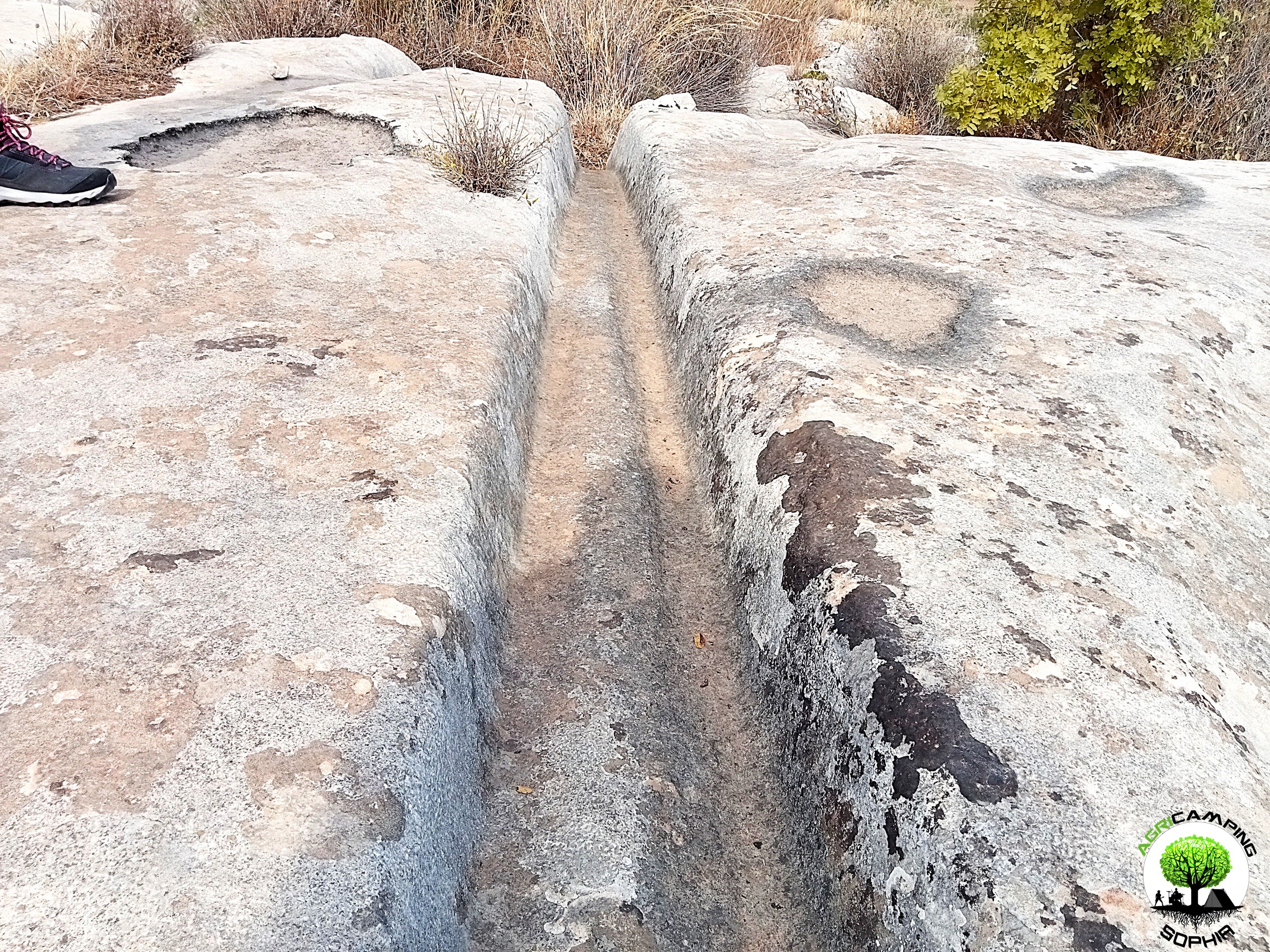 THE POLISHING OF THE CART RUTS
THE POLISHING OF THE CART RUTS
Read also THE PROBLEMATIC EDGES OF THE CART RUTS
I will skip any preamble, referring to to what has already been written regarding the presence of cart ruts in south-eastern Sicily.
To proceed with this comparison I have chosen a probable capital and the corner of a recess present in a block of the northern walls of Eloro that would seem to resemble a pinax, that is, a niche that would have housed a fresco of the heroa, but which a more careful observation refers to a system functional to the grip of the block through a pincer winch. Both elements, like the curt ruts, have remained at the mercy of the elements for millennia, and are therefore subject to comparable wear and tear due to the passage of time. The finishing of the capital should be of a high standard, since it is an architectural element that also has an aesthetic function. The recess, on the other hand, should have...
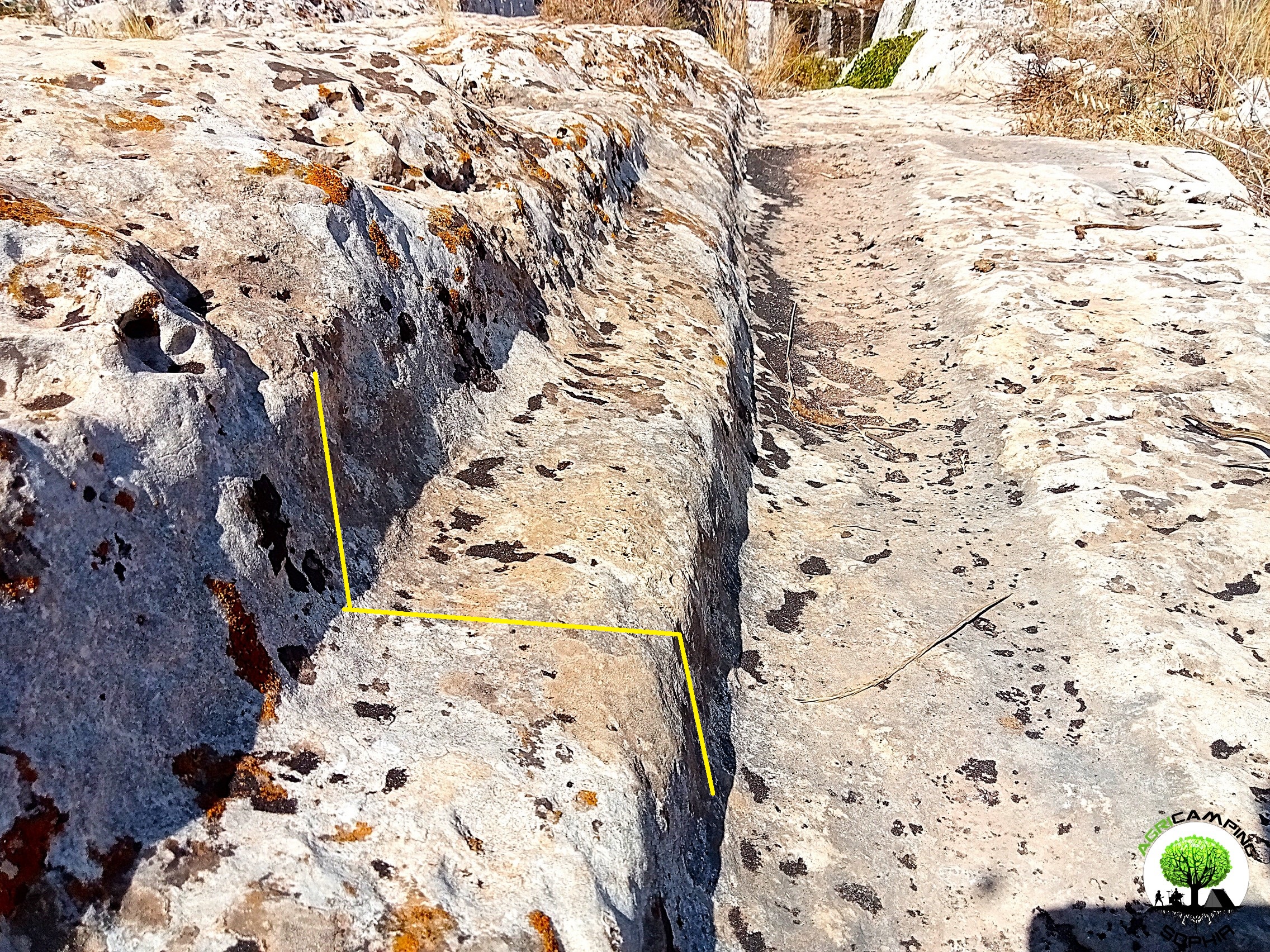 THE PROBLEMATIC EDGES OF THE CART RUTS
THE PROBLEMATIC EDGES OF THE CART RUTS
I will skip any preamble, referring to to what has already been written regarding the presence of cart ruts in south-eastern Sicily.As can be seen in other sites around the world, in some cart ruts I visited, in particular in the Cugni district in Pachino, in the Granati Vecchi district in Rosolini and in the Targia district in Syracuse, a clear border can be seen, a sort of frame, next to the grooves, more marked externally, barely noticeable internally.
The borders I measured have a width of 14-20 centimeters and a height of 8-10 centimeters.
Not all cart ruts have such frames present or particularly evident, regardless of the degree of wear or degradation. They are found above all in cart ruts with less deep grooves.
As already described in detail, given the presence of furrows with a depth of even 65-70 centimeters, the wheels of a possible vehicle would have had to have a...
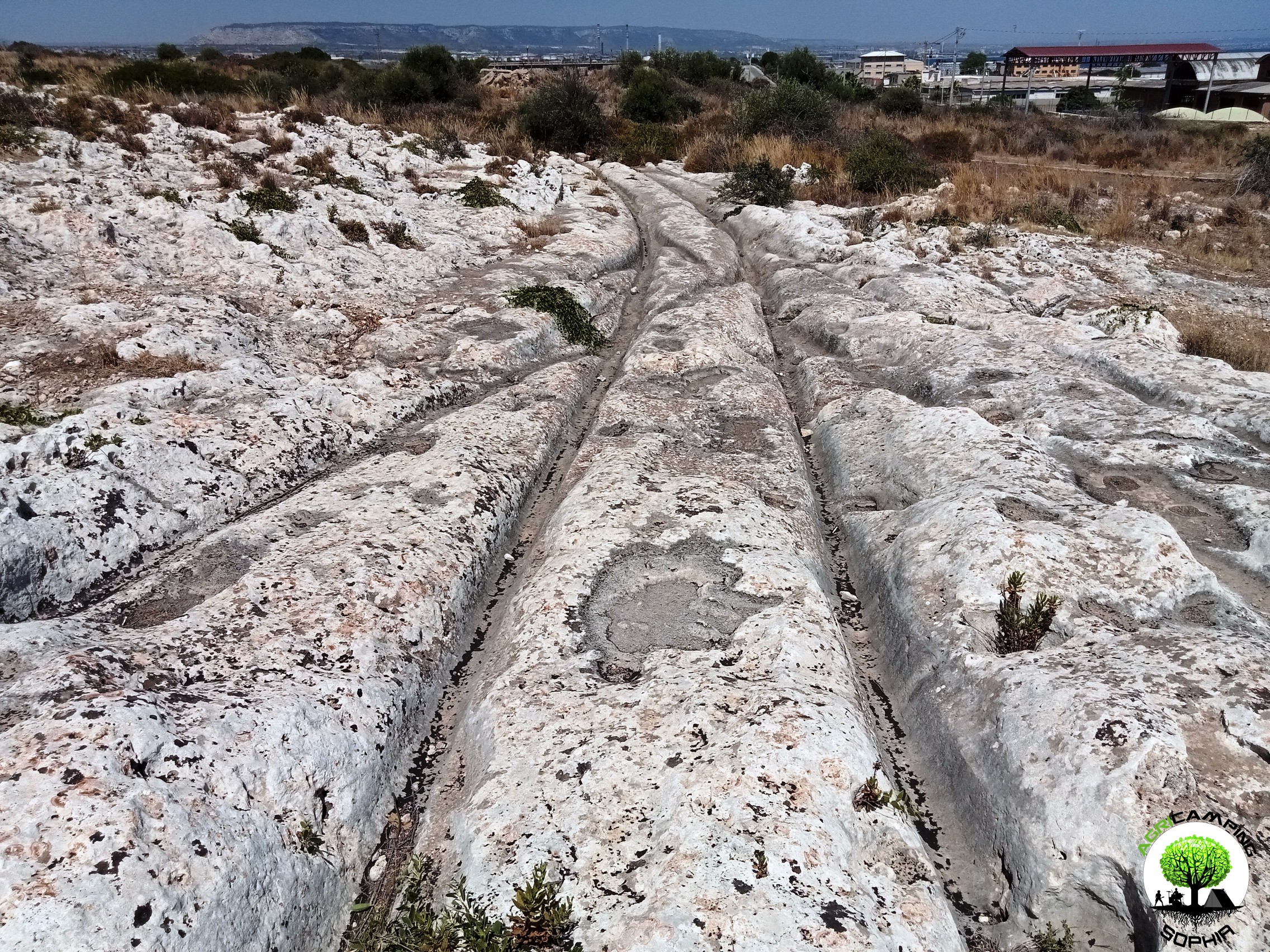 THE PROBLEM OF CART RUTS IN SOUTH-EASTERN SICILY (PART FOUR)
THE PROBLEM OF CART RUTS IN SOUTH-EASTERN SICILY (PART FOUR)
Click here to return to third part
Clapham Junction
As in the Maltese site Misrah Ghar Il-Kbir, also in the Targia and Granatari Vecchi districts the cart ruts intersect and cross each other in a similar way to the track switches in a railway station. The nickname Clapham Junction that was given by David H. Trump to the Maltese site, derives precisely from the similarity with the famous English railway station. For Sagona these are agricultural furrows and water channels, for Mottershead, Pearson and Schaefer these are abandoned paths due to obstacles and wear. Obviously we do not know what the morphology of the Syracuse and Rosolini territory was at times when the cart ruts were traced, but considering the current context, there certainly would have been no agricultural reason to build them, given the presence of fertile land, springs and fresh water courses just a few kilometers...





 DO YOU WANT TO ORGANIZE AN ERASMUS AT AGRICAMPING SOPHIA?
DO YOU WANT TO ORGANIZE AN ERASMUS AT AGRICAMPING SOPHIA? CART RUTS MODELED ON SOFT ROCK?
CART RUTS MODELED ON SOFT ROCK? RACK OR HOUSING FOR CLOGS?
RACK OR HOUSING FOR CLOGS? CART RUTS CUT FROM QUARRIES
CART RUTS CUT FROM QUARRIES CART RUTS AND A FEW TOO MANY PROJECTIONS
CART RUTS AND A FEW TOO MANY PROJECTIONS THE POLISHING OF THE CART RUTS
THE POLISHING OF THE CART RUTS THE PROBLEMATIC EDGES OF THE CART RUTS
THE PROBLEMATIC EDGES OF THE CART RUTS THE PROBLEM OF CART RUTS IN SOUTH-EASTERN SICILY (PART FOUR)
THE PROBLEM OF CART RUTS IN SOUTH-EASTERN SICILY (PART FOUR)